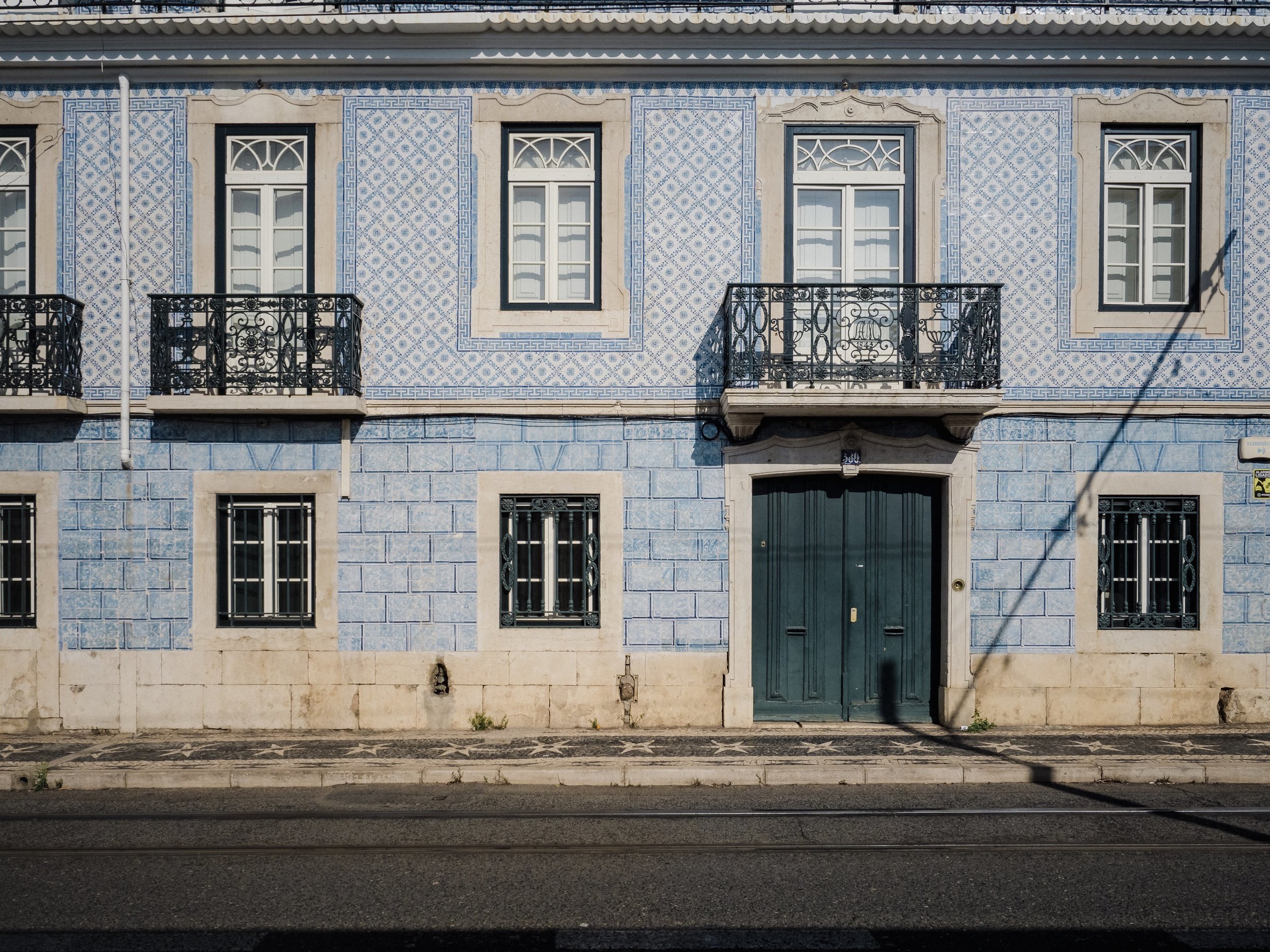Portugal
When planning our recent honeymoon, Lauren and I considered quite a few destinations. As the big day approached, we narrowed our list, and a mid-October holiday in Southern Europe felt like the perfect celebration of our marriage.
Sometimes the only tool for the job is a real guidebook & map.
Southern Europe provides many great experiences to the modern traveller. Visitors in need of a tan can venture to the Mediterranean coastline, which is home to world-class beaches in places like Crete (Greece), Sardinia (Italy), and Brac (Croatia). Those looking to satisfy their innermost foodie can find can't miss meals in the iconic culinary destinations of Spain (San Sebastián and Barcelona) and Italy (Tuscany, Bologna, and Sorrento). History buffs can spend days and days exploring what remains from some of our most important ancient ancestors in Rome (Italy) or Athens (Greece).
Ultimately though, we agreed to travel somewhere that neither of us had previously been: Portugal.
Raising a glass to our first evening in Portugal.
A country rich in history, but small in stature (geographically, it's only about the size of the state of Virginia), it has, in the last half-decade, carved out its niche as a go-to destination. We constructed an itinerary for our trip that would allow us have a little bit of all of various experiences Portugal has to offer.
Algarve
The Southern part of Portugal is flanked to the South and West the Atlantic Ocean. The region is known for its seaside cliffs, beaches, bays, and islands.
During the summer months it fills with tourists looking to enjoy a sunny holiday. October, however, is a bit quieter, and ended up being just the kind of place to relax for a few days to begin our trip.
At the recommendation of a friend, we chose to stay at Vilalara Thalassa in Porches. The resort was ideally situated atop a cliff, and had access to a gorgeous golden sand beach. We enjoyed our time relaxing by the water, strolling through the resort's gardens, and enjoying vinho verde poolside. And our single excursion took us to nearby Vila Joya for one of the stand-out dining experiences of our lives. For anyone looking for a resort experience on the Portugese coast, Vilalara Thalassa is hard to beat.
Sunset in Algarve was hard to beat.
The Alentejo
The largest region in Portugal, The Alentejo is made of rolling hills, wide open plains, and green vineyards. Some of Portugal's biggest vineyards are located here, and the landscape is dotted with marble towns and whitewashed villages. Come to enjoy the rich culinary traditions of Portugal (lots of pork!), while experiencing a varied history that dates as far back as the Paleolithic.
Wandering the streets of Évora.
Évora is one of Portugal's most well-preserved towns, as its walls date back to the 14th century. Inside those walls, we found ourselves wandering the narrow medieval streets, taking in the Roman columns of the Temple of Diana, climbing the cathedral's towers for a rooftop wander, visiting the lively town square, and finishing things off with a fantastic meal at a small restaurant that made us feel like we were family.
The cathedral of Évora, where we wandered around on the roof, and found a 360 degree view of the town and surrounding area.
While in The Alentejo, we also made time for a road trip, where found ourselves transported back in time to one of Portugal's oldest villages, Monsaraz. It would not have been a complete trip to The Alentejo though without a trip to a vineyard though, so we made sure to spend a couple hours in the tasting room at Esporao, where we had the opportunity to try some wine aged in clay barrels.
When it was time to check out of our hotel (the charming Albergaria do Calvario — we'd both highly recommend it!), we were sad to leave behind the charming history of The Alentejo.
A young couple takes in the view from atop the castle in Monsaraz.
Porto
It's hard to think of Portugal without also thinking about Port wine. Located in the Northern part of the country, Oporto is the home to Portugal's famous Port wine sellers. Their storefronts and cellars line the bank of the river Douro in Gaia, and the city of Porto steeply rises on the opposite bank.
Golden hour in Porto.
Câmara Municipal do Porto
It's a city with a unique charm, as well as a bit of an edge. It's also a city that caught in the midst of transition. The riverfront's historic buildings and port cellars are juxtaposed with the business of tourism happening on the river itself. These days, you're just as likely to see high-powered jet skis whiz by as you are to see a tree growing out of the side of a crumbling building.
After the relaxation of Porches and quiet streets of Évora, the bustle of the Porto was all the more apparent.
Lauren and I posing in the gardens of Serralves.
We spent about half of our time in Porto along the riverfront, where we sipped port wine and snacked on calamari and fish (but unfortunately did not arrive in time to tour any of the cellars). A hop-on/hop-off tour bus helped us explore the rest of the city, where we first strolled through the gardens of Serralves, and then found our way to the ocean for some incredibly fresh (and delicious) fish. We even found our way to what can only be described as a [combination vintage shop-art gallery-tapas bar], where we quenched our thirst and cooled our brows with afternoon caipirinhas.
Gaia is home to Porto’s world-famous port cellars.
Porto has been described as a one of Europe's "second cities". I'm not one to bestow or validate that kind of label, but it is a city that in 2018, very much feels like it's on the rise, with its own culture and uniqueness, and one that I might imagine will be very different if and when we return.
Porto’s train station is a beautiful example of the tile that can be found throughout Porto (and Lisbon).
Lisbon
It wouldn't be a trip to Portugal without a visit to Lisbon. It's a city with a long, proud history that was almost completely destroyed nearly 300 years ago by a massive earthquake. That earthquake in many ways has come to define the city, and to this day there seems to be a struggle between the old and the new.
Museu Nacional de Arqueologia
Confusing, narrow (but charming) streets in areas like Alfama contrast with the wider avenues and crush of tourists of the Baixa downtown. The city's skyline is as dotted by construction cranes as it is by the famous white cathedral domes. The Castle of St. Jorge is a perfect encapsulation of this, as some of its original fortifications date back to the 6th century, yet much of what's standing today was restored in the early 20th century.
Lisbon’s tram depot
Our Lisbon experience began in earnest with a long, winding walk from our AirBnb through the Bairro Alto & Chiado to a dinner reservation. It was a bit of prescient start to our visit, as the ups and downs of the journey mirrored the rest of our trip.
A Lisbon sunset, as seen from Miradoura da Graça.
Lisbon at night.
We thoroughly enjoyed the history lesson we received from our walking tour guide. We were not disappointed by the Pastéis de nata from the famous Pastéis de Belém. We got lost (in all the best ways) exploring the trendy LX Factory. We enjoyed varied restaurant experiences, which ranged from the michelin-rated Belcanto to a small traditional eatery in Alfama. We fell in love with the city's scenic views, both at sunset and in the afternoon.
Seen in the distance here, the Ponte 25 de Abril, connects Lisbon to Almada.
In Closing
If the trip taught me anything, it's that in a place like Paris, romance can be found on nearly every street corner; in Portugal (Lisbon in particular), it's there, but at times needs to be sought out (or even unexpectedly stumbled upon).
Lisbon’s number 24 tram (not quite as famous as the 28, but you take what you can get sometimes).
Look past the street art and crumbling buildings, the overeager street vendors and purveyors of illicit goods, and the ever-present cranes and construction, and you'll find the sunset views of the miradouros, that unexpected neighborhood wine bar with delicious tapas, the winding streets of Alfama, beautiful beaches, delicious food and wine, and some of the friendliest people you'll ever meet as a tourist.





















































































